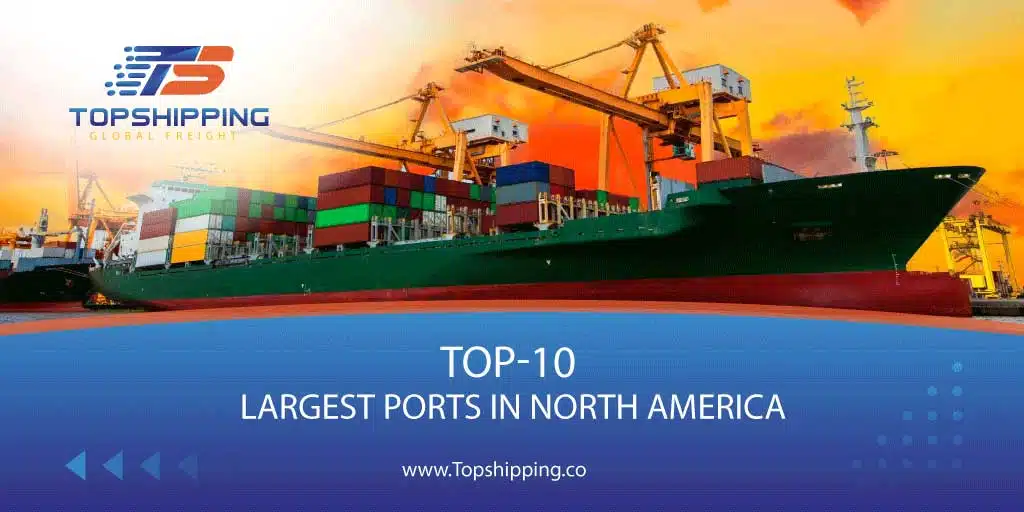

Table of Contents
But as we move further in the field of maritime commerce, it becomes obvious that the development of the ports is just as important as the increase in demand on behalf of commerce trade. TOP 10 LARGEST PORTS IN NORTH AMERICA 2024 are much-needed hubs for goods transiting through the regions, and these players contribute immensely to regional economic development, innovating transportation logistics.
With infrastucture continuing to get better with advancement in technology, these ports have been driven to the frontline of efficiency, handling colossal volumes of cargo with precision at high speed.
Moreover, these megaports are situated at vantage positions that enable them to utilize major shipping lanes, interconnect continents, and provide the medium for tremendous goods exchange between them. As major agents in ensuring international relations and great economic prosperity, these ports epitomize the role of North America in the global web of trade.
More than entry points, the TOP 10 LARGEST PORTS IN NORTH AMERICA 2024 are dynamic ecosystems that fire up economic growth, inspire innovation, and continue to push progress for business at large around the globe.
Ports | Annual container volume (TEUs) |
Los Angeles Port | 9.3 million |
Long Beach Port | 8.1 million |
Georgia Ports (Savannah and Brunswick) | 4.35 million |
New York & New Jersey Port | 4.2 million |
Seattle-Tacoma Port | 3.7 million |
Virginia (Norfolk Port) | 3.7 million |
Oakland Port | 2.5 million |
Port of Houston | 1.6 million |
South Carolina (Port Charleston) | 1.29 million |
Maryland (Baltimore Port) | 1 million |

1-Los Angeles Port
Category | Information |
Geographic Location | Near the city of Los Angeles |
Cargo Volume | Largest port in the United States in terms of cargo volume |
Number of Ships | Over 27 |
Economic Impact | Plays a significant role in the regional and national economy |
Types of Cargo | Imports and exports of various goods including electronics |
Technologies and Facilities | Utilizes advanced technologies in transportation |
Automobiles (Units) | 157 |
Cargo Tonnage | 178 MMRT (FY 2022/23) |
Container Volume | 8.6 million TEUs |
Cruise Ship Calls (Total Passengers) | 219 (1 |
Vessel Arrivals (All Types) | 1 |
Top Five Containerized Imports(TEUs) | furniture (561 |
Top Five Containerized Exports(TEUs) | paper/wastepaper (196 |
Top Five Trading Partners(cargo value) | China/Hong Kong ($112 billion)Japan ($38 billion)Vietnam ($30 billion)South Korea ($18 billion)Taiwan ($17 billion) |
Top Five Foreign Trade Routes(percentage of cargo handled) | Northeast Asia (61%)Southeast Asia (27%)India Sub-continent (3%)Northern Europe (3%)Mediterranean (2%) |
The Port of Los Angeles, a colossus of North American ports, is located along the Southern California coast. It is highly praised by everyone for its size, efficiency, and strategic location; thus, it is considered a very important linchpin in global trade networks.
The Port of Los Angeles is a 7,500-acre trade and navigation facility comprising state-of-the-art terminals and facilities capable of handling the most varied range of cargo, including containerized cargo, automobiles, and bulk commodities. Its state-of-the-art infrastructure includes cutting-edge container terminals equipped with advanced technology to streamline operations and maximize efficiency.
The Port of Los Angeles is the most active container port in America and a critical linkage in trade between North America and the Asia-Pacific region. It is a major arrival and departure point for cargo imports and exports. The strategic location on the West Coast provides for direct access to major nationwide markets, while the extensive network of on-dock rail and highway connections serves key inland markets.
Beyond the sound economics, the Port of Los Angeles is in pursuit of environmental stewardship and sustainability through such initiatives as the Clean Air Action Plan, with the objective of reducing emissions, lessening its environmental footprint, and setting a good example for ports all over the world.
In all, the Port of Los Angeles stands as a testament to the important role that ports play in the global economy, serving as dynamic hubs of commerce, innovation, and connectivity. With its unparalleled infrastructure and strategic location, it still remains a cornerstone of North America’s maritime trade infrastructure and furthers economic growth and prosperity for the region and beyond.

2-Long Beach Port California
Similar to Los Angeles, the Port of Long Beach is also one of the most significant ports on the West Coast, with outstanding skill in maritime trade. This facility and strategic location enable the handling of very diversified cargo in this port efficiently and smoothly. It sustains trade between North America and Asia.
It is located on 3,200 acres and is one of the busiest container ports in the world. It leads with environmental stewardship via policy from the Green Port Policy to the Clean Air Action Plan. It embraces innovation-partnering with stakeholders to advance technology and best practices in operations.
This includes leading automated terminals, renewable energy projects, shaping the future of maritime commerce.
In other words, the Port of Long Beach represents progress and sustainability in North America’s modern maritime industry, with world-class facilities, devoted environmental care, and a culture of innovation; it drives economic growth, supports global trade, and champions sustainability for current and future generations.

Category | Information |
Geographic Location | Adjacent to the city of Long Beach |
Cargo Volume | One of the busiest ports in the United States in terms of cargo volume |
Number of Ships | Handles over 7 |
Economic Impact | Significant contributor to the regional and national economy |
Types of Cargo | Handles various types of cargo including containerized goods |
Technologies and Facilities | Features advanced container terminals |
3-Georgia Ports (Savannah and Brunswick)
Similar to Los Angeles, the Port of Long Beach is also one of the most significant ports on the West Coast, with outstanding skill in maritime trade. This facility and strategic location enable the handling of very diversified cargo in this port efficiently and smoothly. It sustains trade between North America and Asia.
It is located on 3,200 acres and is one of the busiest container ports in the world. It leads with environmental stewardship via policy from the Green Port Policy to the Clean Air Action Plan. It embraces innovation-partnering with stakeholders to advance technology and best practices in operations.
This includes leading automated terminals, renewable energy projects, shaping the future of maritime commerce.
In other words, the Port of Long Beach represents progress and sustainability in North America’s modern maritime industry, with world-class facilities, devoted environmental care, and a culture of innovation; it drives economic growth, supports global trade, and champions sustainability for current and future generations.

Category | Information |
Geographic Location | Savannah: Located in Savannah |
Cargo Volume | Among the busiest ports in the United States; handling millions of tons of cargo annually |
Number of Ships | Handles thousands of vessels annually |
Economic Impact | Major contributor to the regional and national economy |
Types of Cargo | Diverse range of cargo including containers |
Technologies and Facilities | Utilizes advanced container handling equipment |
4-New York & New Jersey Port
The strategic maritime facility of the Port of New York and New Jersey graces the East Coast, being an integral part of global trade.
Having an extended infrastructure with strategic positioning, this is considered one of North America’s largest ports. Covering an area greater than 3,000 acres with several terminals, this port efficiently handles all types of cargo-from containers to vehicles and from bulk commodities to vehicles.
Its prime location at major shipping routes draws international carriers to its facilities, hence it connects North America and beyond with convenience in trade. In addition, the modern technological facilities at the port ensure smooth cargo operations.
Advanced cranes at the container terminals make the loading and unloading of containers an easy affair, while the strong rail and highway networks provide excellent connectivity to the inland markets.
Committed to being greener, it inaugurated the Clean Air Strategy and the Harbor Deepening Program to cut its footprint of emissions further and care better for the environment.
The Port of New York and New Jersey has been symbolic of resilience, innovation, full of historical lessons, and cultural diversity, depicting economic might.
An economic powerhouse, a factor of prosperity, with the port shaping the future face of world trade

Category | Information |
Geographic Location | Located in the New York metropolitan area, spanning across parts of New York and New Jersey |
Cargo Volume | One of the busiest ports in the United States, handling millions of tons of cargo annually |
Number of Ships | Handles thousands of vessels annually |
Economic Impact | Major contributor to the regional and national economy, supporting thousands of jobs |
Types of Cargo | Diverse range of cargo including containers, automobiles, petroleum, bulk commodities, etc. |
Technologies and Facilities | Features advanced container terminals, rail connections, and logistics technology |
5-Seattle-Tacoma Port
The Port of Seattle-Tacoma, or more colloquially, the Northwest Seaport Alliance, occupies a major maritime gateway in the Pacific Northwest part of the United States. Its strategic location combines modern facilities with efficient operations to serve vital links in global trade networks.
Strategically located, the Puget Sound-based Port of Seattle-Tacoma in the state of Washington provides direct connections to major markets in North America, Asia, and beyond. Its extensive terminals and facilities can accommodate everything from containers to automobiles and bulk commodities down to specialized goods.
The Seattle-Tacoma Port is among the largest and busiest in the West Coast and, thus, is very important from the point of view of international trade and commerce. Its modern container terminals have been equipped with the latest technology for optimization to make their handling efficient and hence a favorite of shippers and carriers. Besides its economic importance, the Port of Seattle-Tacoma is committed to environmental stewardship.
Through the Clean Air Program and the EcoPorts Certification, among other initiatives, it seeks to minimize its footprint on the environment, making its activities as ‘green’ as possible.
The Port of Seattle-Tacoma is an engine of economic growth and a job-creating machine for this region.
Located in a strategic location, with its efficiency in handling operations, businesses and investments are attracted that help spur economic growth and prosperity in the community in which it operates and well beyond.
All in all, the Port of Seattle-Tacoma is an important epicenter in global trade and commerce. It has connected businesses with consumers over continents and continues to promote economic growth and increased prosperity for this region and beyond. Its strategic location, modern facilities, and commitment to sustainability make it the cornerstone for North America’s maritime trade infrastructure.

Category | Information |
Geographic Location | Located in the Puget Sound region of Washington state |
Cargo Volume | One of the largest port complexes in the United States |
Number of Ships | Handles thousands of vessels annually |
Economic Impact | Major contributor to the regional and national economy |
Types of Cargo | Diverse range of cargo including containers |
Technologies and Facilities | Features state-of-the-art container terminals |

6-Virginia Norfolk Port
The Port of Virginia is one of the most pivotal maritime gateways on the United States East Coast and is based in Norfolk. It is a key driver in international trade and commerce, combining a strategic location with state-of-the-art facilities and efficient operations.
Centrally positioned in the Hampton Roads region along the Chesapeake Bay, the Port of Virginia’s advantageous location features direct access to major markets in North America, Europe, and beyond. Its comprehensive terminals and facilities have a capacity to handle a broad range of cargo, from containers to automobiles, breakbulk, and bulk commodities.
The Port of Virginia is one of the largest, most busy East Coast ports, and serves as a very important link in the global supply chains, acting as an efficient gateway for cargo moving between North America, Europe, Asia, and other areas. Its state-of-the-art container terminals are supported by advanced technology to further drive efficiency and productivity in their operations. The port is thus popular with both shippers and carriers because of this consideration.
In addition to its economic importance, the Port of Virginia is committed to the principles of environmental sustainability and stewardship. The concept of the GreenPort Environmental Management System and the Clean Energy Initiative are applied to work towards minimizing its footprint on the environment by urging more sustainable practices throughout its operations.
Additionally, the Port of Virginia serves as an economic driver for development and job creation in the region. It attracts business and investment, driving economic growth and prosperity through strategic location and efficiency in its operations to the local community and beyond.
From inbound cargo to outbound, the Port of Virginia continues to be a cornerstone for global trade and commerce, ultimately connecting business and consumer interests across continents in such a way that it drives economic growth and prosperity for regional and greater markets. It also entails a strategic location, modern facilities, and commitment to sustainability.
Category | Information |
Geographic Location | Located in Norfolk |
Cargo Volume | One of the busiest ports on the East Coast |
Number of Ships | Handles thousands of vessels annually |
Economic Impact | Major contributor to the regional and national economy |
Types of Cargo | Diverse range of cargo including containers |
Technologies and Facilities | Features advanced container terminals |
7-Oakland Port
The Port of Oakland is one of the key American West Coast maritime gateways in Northern California. It is highly regarded for the strategic location, efficiency of operations, and a firm commitment to sustainability. This is pretty important for facilitating international trade and commerce.
The Port of Oakland is situated on the eastern shore of San Francisco Bay and has a premier location, with direct access to one of the largest markets in North America and beyond. Large facilities and terminals are in full gear at this port, offering efficient handling for cargo as diversified as containers, automobiles, refrigerated cargo, and bulk commodities.
The Port of Oakland is one of the busiest container ports in the United States, playing a fundamental role in a series of global supply chains. It acts as the first choice for North America and the Asia-Pacific regions to facilitate trade.
Its state-of-the-art container terminals are designed with the latest technology to cut unnecessary operations and ensure efficiency for quicker vessel and cargo turnarounds.

Besides the economic importance of the Port of Oakland, environmental sustainability is of great concern.
It embarks on activities related to the reduction of emission through programs such as the Maritime Air Quality Improvement Plan and Shore Power Program, improves the quality of air, and reduces its environmental footprint.
Moreover, the Port of Oakland also acts as an agent for regional economic development by providing jobs that are really needed. Because it is strategically positioned and well-operated, its allure to businesses and investors is substantial, which in turn, stimulates economic growth and propels prosperity toward the local community and beyond.
Conclusion In a nutshell, the Port of Oakland is one of the most vigorous centers of world trade and commerce. It connects businesses and consumers across continents while fostering economic growth for both the region and beyond. Its strategic location, with efficient operations and a commitment to sustainability, surely cements its position as an asset in North America’s maritime infrastructure that supports trade.
Category | Information |
Geographic Location | Located in Oakland |
Cargo Volume | One of the busiest container ports in the United States |
Number of Ships | Handles thousands of vessels annually |
Economic Impact | Major contributor to the regional and national economy |
Types of Cargo | Diverse range of cargo including containers |
Technologies and Facilities | Features state-of-the-art container terminals |
8-Port of Houston
The Port of Houston is an international gateway situated along the Gulf Coast of Texas and serves as a vital center of commerce and transportation in North America.
Leveraging its strategic location, comprehensive facilities, and effective operations, it features among the largest and busiest ports in the United States.
The Port of Houston is a 25-mile-long complex of diversified public and private facilities along the 52-mile-long Houston Ship Channel and efficiently moves goods into and out of the marketplace. The channel will serve a wide variety of cargo, including containerized cargo, breakbulk cargo, project cargo, and petroleum products.
At a strategic location, it connects directly to the Gulf of Mexico and thus serves as an excellent gateway for trade between North America, Latin America, and the rest of the world.
The Port of Houston presents very modern technology and infrastructure to meet the demands of today’s times in trade.
This port has the latest cranes and handling machinery at its container terminals, with a wide rail and highway network that provides uncongested access to both domestic and international markets for efficient cargo loading and unloading operations, hence its reputation in top-class logistics services.

Besides efficiency, the Port of Houston is committed to sustainability as a responsible steward of the environment.
It aspires to minimize impact on the ecosystem through reducing emissions and promoting air quality without sacrificing navigational access via various programs such as the Clean Air Strategy and the Harbor Navigation Improvement Program.
Apart from its economic significance and care for the environment, the Port of Houston also plays an integral part in promoting economic growth and prosperity for the region and beyond.
With its strategic location, first-class infrastructure, and dedication to sustainability, it remains the cornerstone of North America’s modern maritime trade infrastructure in building a conduit for goods in and out, thereby stimulating international trade and commerce.
Category | Information |
Geographic Location | Located in Houston |
Cargo Volume | One of the busiest ports in the United States |
Number of Ships | Handles thousands of vessels annually |
Economic Impact | Major contributor to the regional and national economy |
Types of Cargo | Diverse range of cargo including containers |
Technologies and Facilities | Features advanced container terminals |
9-South Carolina Port Charleston
The Port of Charleston is a key maritime gateway along the southeastern United States coast and is located in South Carolina. Strategic location, modern facilities, and efficient operations allow it to be among the major cargo gates in support of international trade and commerce.
Due to its prime location near the Atlantic Ocean, the Port of Charleston offers easy access to the key markets of Europe, North America, and other continents.
This comes with enlarged terminals and facilities equipped to handle various types of cargo, including those in containers, motor vehicles, bulk lots, and even refrigerated cargo.
This flexibility demonstrates the versatility of the port to efficiently handle a wide range of merchandise at speed and is indicative of its resilient and flexible logistics network.
The Port of Charleston is one of the fastest-growing ports in the country, a major entry point for trade between North America, Europe, and Asia, and an important part of global supply chains.
Operating modern container terminals, the Port of Charleston applies advanced technology and enjoys one of the highest productivities in the world, keeping cargo moving with ease.

Not only has the port contributed to the economic factor, but it is also bound toward environmental sustainability, showing concern for the ecological perspectives.
It seeks to reduce its ecological footprint by different means, including the Environmental Management System and the Shore Power Program, and encourages sustainability for all its practices.
Furthermore, the Port of Charleston serves as a driver of economic development and job opportunities for the region.
The good performance and strategic location attract businesses and investment, contributing to economic growth and prosperity not only for the local community but beyond.
In other words, the Port of Charleston serves as a thriving hub for international trade and commerce, bridging businesspeople and consumers from one continent to another and thus guaranteeing economic growth and prosperity for the region and beyond. Its strategic location, modern facilities, and commitment to sustainability have secured its position as an integral component of North American maritime trade infrastructure.
Category | Information |
Geographic Location | Located in Charleston |
Cargo Volume | One of the busiest ports on the East Coast |
Number of Ships | Handles thousands of vessels annually |
Economic Impact | Major contributor to the regional and state economy |
Types of Cargo | Diverse range of cargo including containers |
Technologies and Facilities | Features modern container terminals |
10-Maryland Baltimore Port
The State of Maryland in the United States boasts of the Port of Baltimore, which is considered one of the most critical East Coast maritime entry points. It enjoys an enviable reputation in terms of strategic location, comprehensive facilities, and efficient operations that make it one of the key players in international trade and commerce.
Situated on the Patapsco River and Chesapeake Bay, the Port of Baltimore enjoys a strategic location with direct access to major markets in North America, Europe, and beyond. It offers comprehensive terminals and facilities capable of handling most types of cargo, including containers, automobiles, bulk commodities, and specialized cargo.
As one of the largest ports on the East Coast, the Port of Baltimore acts as an important linker in the global supply chain, moving goods across major regions: North America, Europe, and Asia, to name just a few.
The option that is greatly preferred by shippers and carriers alike is state-of-the-art facilities at container terminals with the latest technological advancements.
These container facilities guarantee an organized operation and smooth processing of cargo, which is why it is one of the favorites in this industry.

Besides economic importance, the Port of Baltimore looks at environmental sustainability and stewardship as well.
With programs such as the GreenPort Environmental Management System and the Clean Diesel Initiative, it tries to minimize its impact on the environment while undertaking initiatives promoting environmentally friendly practices across operations at the same time.
The port further acts as a stimulus for economic development and job opportunities in the area.
Because it is located in such a strategic position, besides ensuring efficient operations, it invites investment and business to its fold, hence stimulating economic growth and prosperity for the locality and beyond.
In other words, the Port of Baltimore stands at the confluence of international commerce and trade, connecting businesses and consumers on one continent to another while driving economic growth and prosperity both in this region and beyond. With its strategic location, comprehensive facilities, and commitments to sustainability, it is a cornerstone within North America’s maritime trade infrastructure.
Category | Information |
Geographic Location | Located in Baltimore |
Cargo Volume | One of the busiest ports on the East Coast |
Number of Ships | Handles thousands of vessels annually |
Economic Impact | Major contributor to the regional and state economy |
Types of Cargo | Diverse range of cargo including containers |
Technologies and Facilities | Features modern container terminals |
Conclusion: Large commercial ports in North America are very important, facilitating huge amounts of trade and commerce.
The large ports are so important for goods arriving or leaving the continent and form a basis of connectivity between North America and other global markets.
Situated at strategic locations, such modern facilities are important contributors to regional and country-level economic matters.
This competition between the ports has continuous implications for innovation and efficiency in the shipping industry, further solidifying their positions at the pinnacle of international trade.
Looking forward, it certainly seems that these will be the pivotal ports in the economic activity and growth on the North American continent.
For more information on how these ports impact regional economies and global trade, visit our website or follow us on social media.

TopShipping
With years of experience in logistics and freight forwarding, the author is passionate about making shipping smoother and more efficient.
As a leader at TopShipping, they’ve developed a deep understanding of supply chain management, international shipping rules, and creative logistics solutions. They’re driven by a desire to help businesses succeed by delivering reliable, customer-focused services.
Over the years, they’ve also shared their expertise by writing for various industry publications, offering practical tips and insights on the latest trends in logistics. Thanks to their leadership, TopShipping has become a trusted name for companies looking for hassle-free global freight solutions.
Comment Section
Comment
Write your idea about "Top 10 largest ports Iin North America 2024"


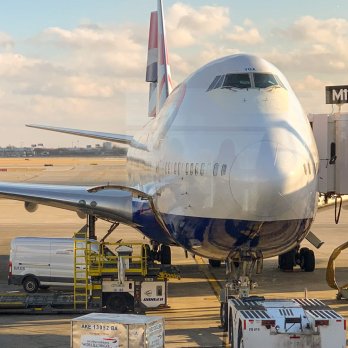



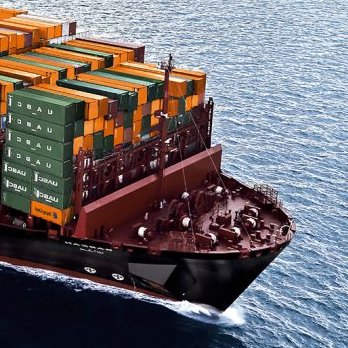
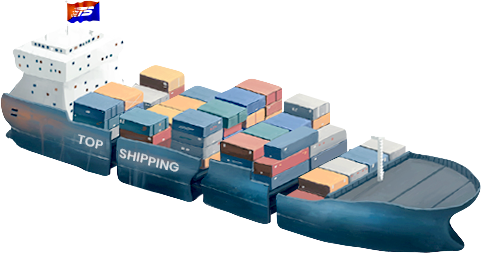
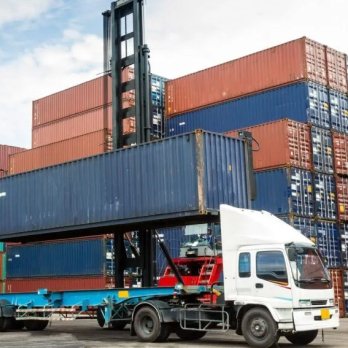

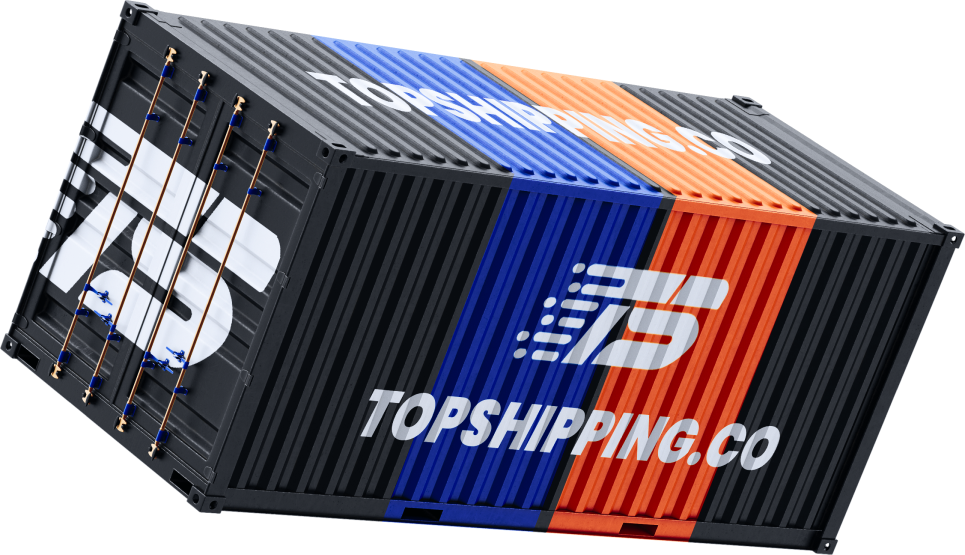





No comments yet.